


C57BL/6-Il5tm1(IL5)BcgenIl5ratm2(IL5RA)Bcgen/Bcgen • 111932
| Product name | B-hIL5/hIL5RA mice |
|---|---|
| Catalog number | 111932 |
| Strain name | C57BL/6-Il5tm1(IL5)BcgenIl5ratm2(IL5RA)Bcgen/Bcgen |
| Strain background | C57BL/6 |
| Aliases | EDF, IL-5, TRF; CD125, CDw125, HSIL5R3, IL5R |
Gene targeting strategy for B-hIL5/hIL5RA mice. The exons 1-4 of mouse Il5 gene were replaced by human IL5 exons 1-4 in B-hIL5/hIL5RA mice. The coding sequence of human IL5RA extracellular domain, mouse IL5RA transmembrane and cytoplasmic domain were inserted to replace part of murine exon 5.
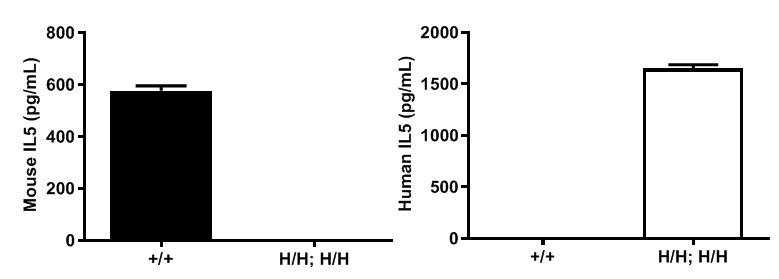
Strain specific IL5 expression analysis in homozygous B-hIL5/hIL5RA mice by ELISA. Splenocytes were collected from wild-type C57BL/6 mice (+/+) and homozygous B-hIL5/hIL5RA mice (H/H; H/H) stimulated with anti-CD3ε and anti-CD28 in vitro, and cell culture supernatant was collected and analyzed by ELISA with species-specific IL5 ELISA kit. Mouse IL5 was detectable in wild-type mice. Human IL5 was exclusively detectable in homozygous B-hIL5/hIL5RA but not wild-type mice.
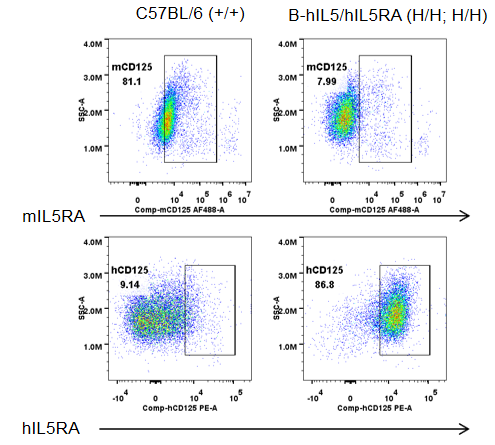
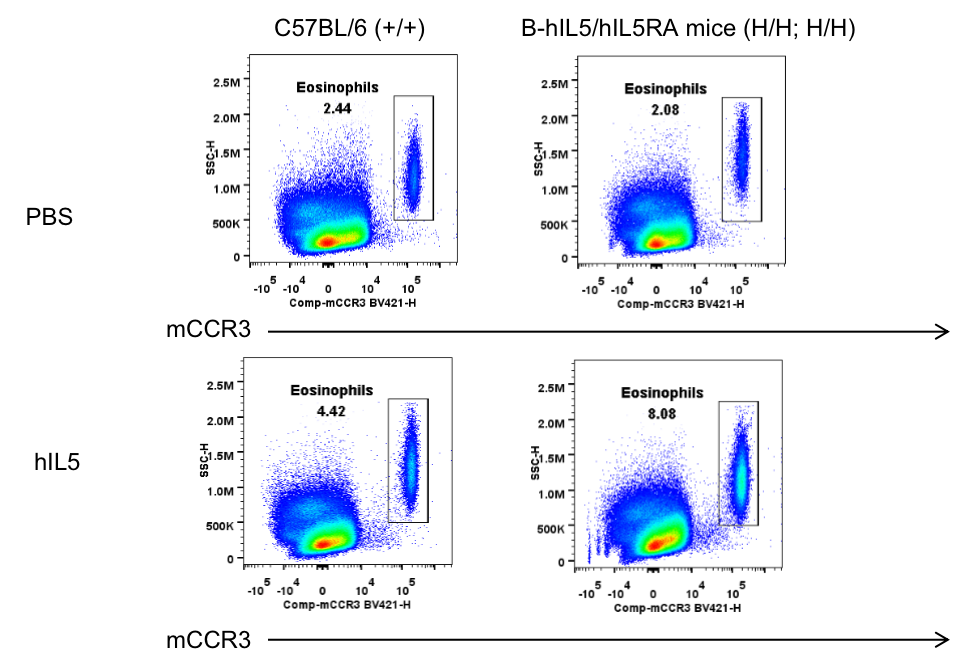
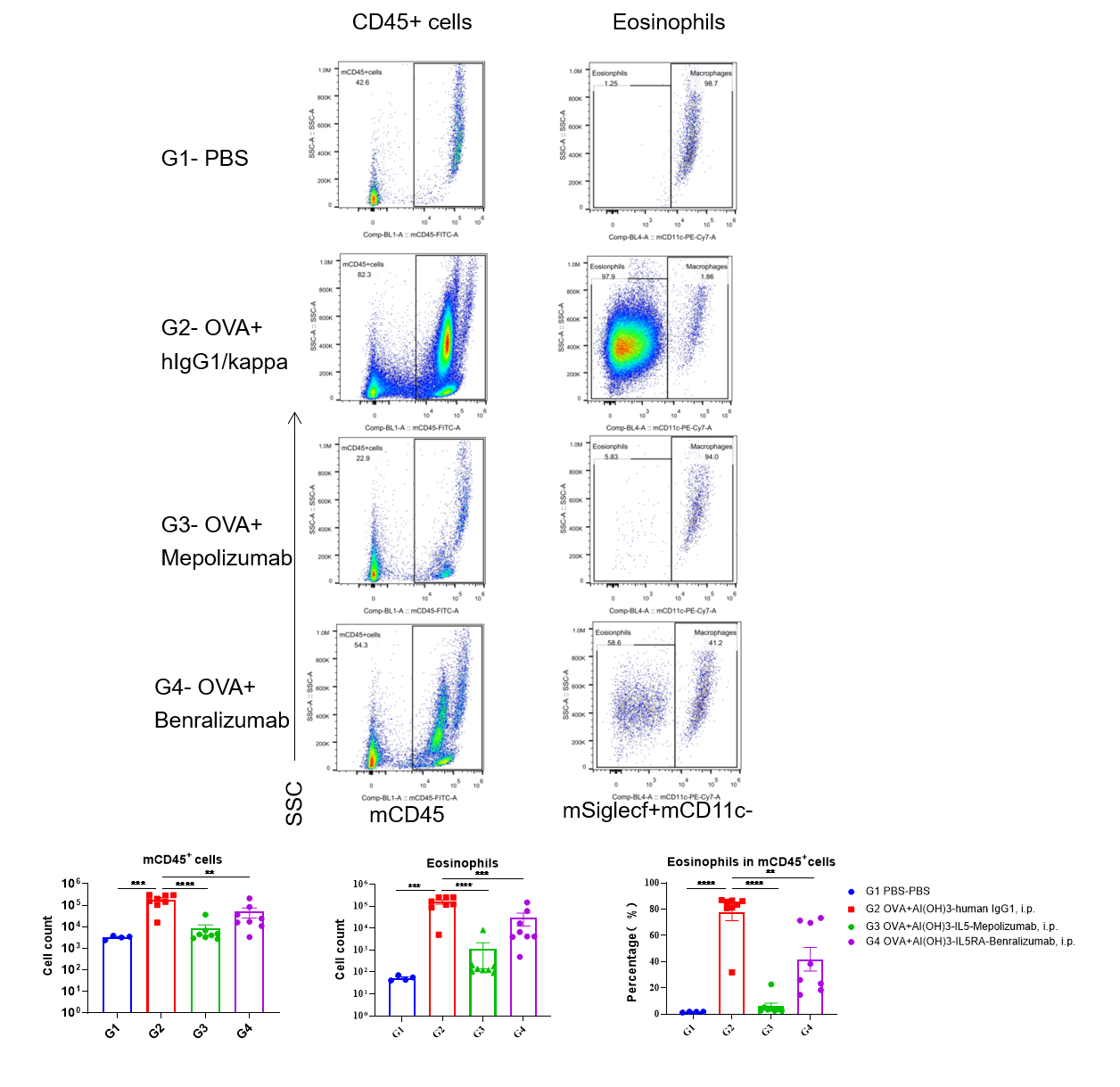
The number of BALF immune cells in mouse asthma model BALF immune cells were isolated from B-hIL5/hIL5RA mice (n=8). The number of eosinophils was analyzed by flow cytometry under the treatment of PBS, mepolizumab or benralizumab (in house). After treatment of mepolizumab or benralizumab (in house), the number of inflammatory cells was much lower than the positive control in homozygous B-hIL5/hIL5RA mice. Data was shown as Mean±SEM, and analyzed using One way ANOVA followed Dunnett compared G1/G3/G4 with G2. (**p
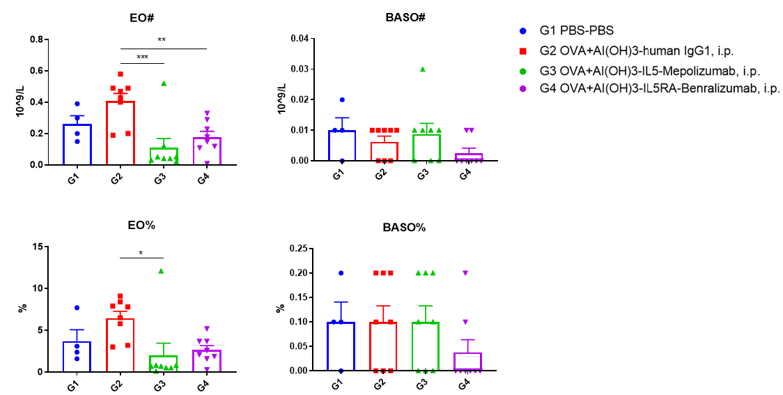
Analysis of eosinophils and basophils in blood by blood routine. Blood was collected at the study endpoint. The results showed that the levels of eosinophils in mice treated with mepolizumab or benralizumab (in house) is lower than that in untreated mice. Data was shown as Mean±SEM, and analyzed using One way ANOVA followed Dunnett compared G1/G3/G4 with G2. (**p<0.01, ***p<0.001, ****p<0.0001). Intraperitoneal (i.p.)
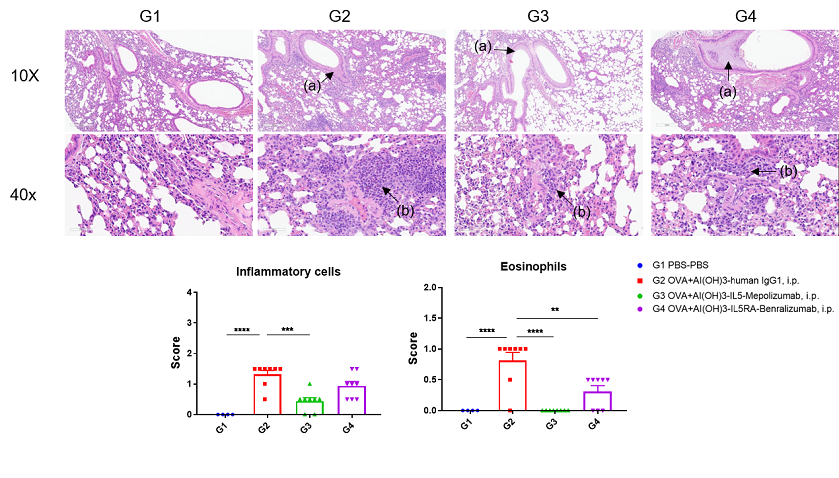
H&E staining of asthma-like model in B-hIL5/hIL5RA mice. Lung tissues were collected at the study endpoint. H&E staining results showed that the lung tissues from B-hIL5/hIL5RA mice exposed to PBS aerosols did not show any inflammation, while OVA exposure resulted in a significant increase in peribranchial and perivascular inflammation in B-hIL5/hIL5RA mice. A significantly reduction in eosinophils infiltration was observed in mice treated with mepolizumab or benralizumab (in house). Data was shown as Mean±SEM, and analyzed using One way ANOVA followed Dunnett compared G1/G3/G4 with G2. (**p<0.01, ***p<0.001, ****p<0.0001). Intraperitoneal (i.p.).
